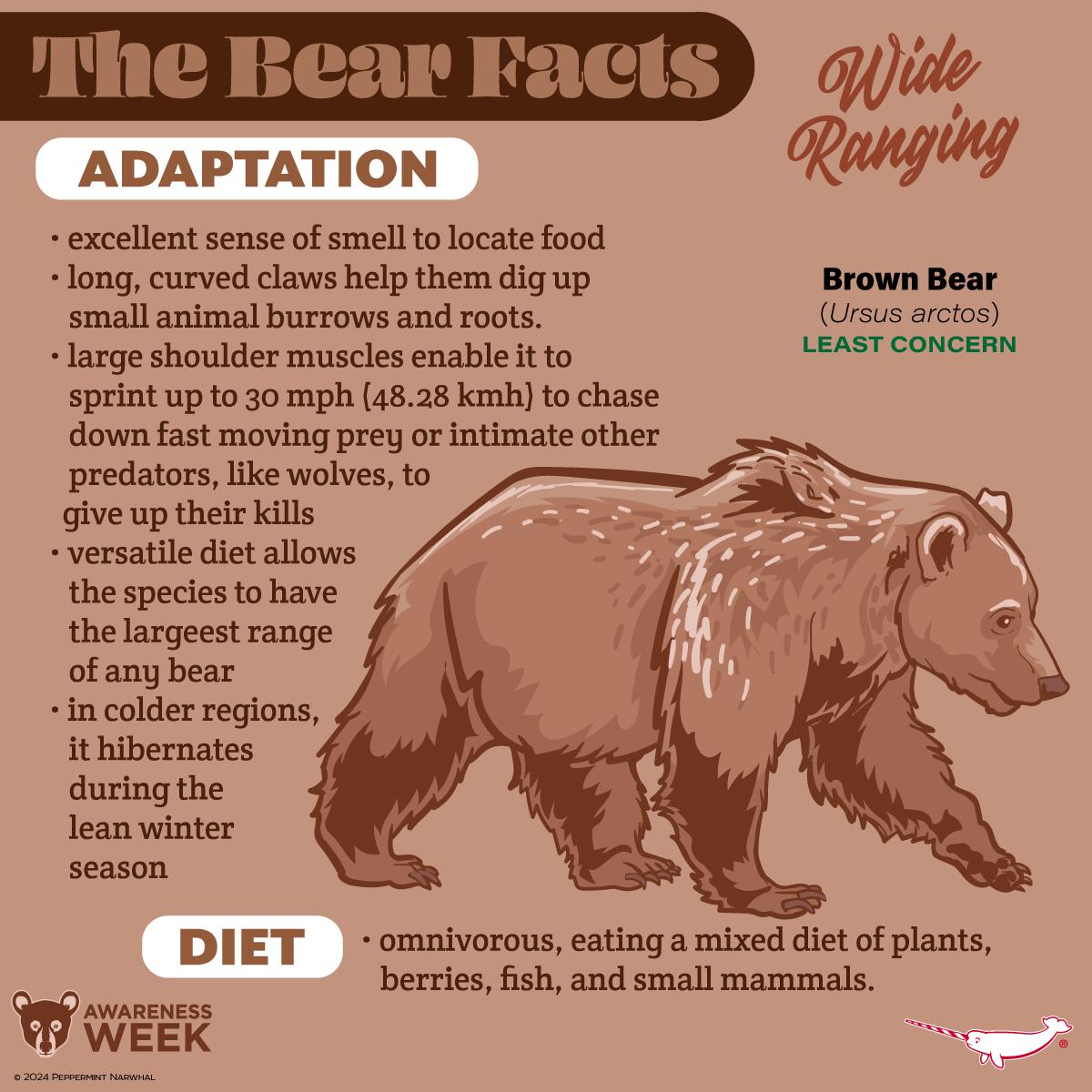- Distribution and habitat of the brown bear
- Physical characteristics and behavior of Ursus arctos
- Diet and hunting patterns of the brown bear
- Reproduction and lifecycle of the brown bear
- Conservation status and efforts for the brown bear
The brown bear (Ursus arctos), often recognized for its formidable presence and widespread distribution, occupies a special place in wildlife conservation. Recognized as a species of least concern by the International Union for Conservation of Nature (IUCN), the brown bear’s story is adaptable and resilient, yet it remains intertwined with human-wildlife conflict and habitat encroachment. Exploring its distribution, physical traits, dietary habits, reproduction, and conservation measures provides insightful knowledge into the life of this majestic mammal and the collective efforts required to ensure its survival.
Distribution and Habitat of the Brown Bear
The brown bear boasts a versatile geographical distribution spanning North America, Europe, and Asia. Its habitat is diverse, ranging from the dense forests of the Pacific Coast to the tundra regions of Alaska, the rugged mountains of the Rockies, and the remote wilderness of Siberia and the Himalayas. Adaptability to various environments is a hallmark of the brown bear species, attributed to their omnivorous diet, physical endurance, and behavioral flexibility. This adaptability, however, also necessitates a mosaic of conservation strategies to address the varying challenges encountered in different ecosystems.
Physical Characteristics and Behavior of Ursus arctos
Physical characteristics of the brown bear, such as its size, fur color, and muscular build, are remarkably varied, reflecting the species’ adaptability to diverse habitats. Adult bears typically weigh between 200 to 500 kilograms, though individuals in areas with abundant food sources, such as coastal Alaska, can exceed this range. Their fur color ranges from dark brown to light tan, contributing to their camouflage in various environments. Behaviorally, brown bears are solitary animals, with females and cubs forming the most stable social units. They possess a keen intelligence that aids in foraging, and they display a broad range of emotions and behaviors that suggest a complex social structure not fully understood.
Diet and Hunting Patterns of the Brown Bear
The brown bear is an omnivore with a diet that includes fruits, nuts, leaves, roots, fish, and small to large mammals. The dietary flexibility of Ursus arctos is a key factor in its wide distribution. In coastal regions, salmon becomes a significant food source, while in other areas, they may rely more heavily on plant material and small mammals. The brown bear’s foraging behavior underscores its adaptability, but it also leads to conflicts with humans, particularly where bears seek out livestock or crops as easy food sources.
Reproduction and Lifecycle of the Brown Bear
Reproduction in brown bears is characterized by delayed implantation, allowing females to give birth during hibernation to ensure the highest survival chance for the cubs. Typically, two to three cubs are born blind and helpless and depend entirely on the mother for food and protection. Mother bears fiercely protect their young, teaching them essential survival skills over two to three years. This lengthy parental care is crucial for the survival of the offspring but also results in a slow reproduction rate, making the species vulnerable to rapid environmental changes and human-induced mortality.
Conservation Status and Efforts for the Brown Bear
Despite its classification as a species of least concern, the brown bear faces significant threats from habitat destruction, climate change, and human encroachment. Conservation efforts focus on habitat preservation, creating wildlife corridors that allow for safe migration, and reducing human-bear conflicts through community engagement and education. Programs that promote coexistence, such as bear-proof trash management and non-lethal deterrents, have successfully reduced fatalities on both sides. International cooperation is key to the conservation of migratory populations, emphasizing the need for policy harmonization and cross-border conservation initiatives.
The story of the brown bear, Ursus arctos, is one of ecological significance and conservation success, marked by challenges and triumphs. Understanding the intricate details of their habitat, physical characteristics, diet, reproduction, and conservation introduces us to the complexity of wildlife management and the continuous effort required to protect these majestic creatures and their habitats. Engaging with and supporting conservation initiatives is vital for ensuring that the brown bear continues to thrive across its vast range for future generations.
*****
Source Description
The Bear Facts – Wide Ranging
Brown Bear (Ursus arctos) – Least Concern
Happy Bear Awareness Week!
Stay connected with us all this week as we spotlight all eight bear species and share some fun and informative facts about each.
NEW Series 6
Pledge Now: endangeredpins.com
Campaign ends June 3, 2024.
Bear Merch:
https://www.peppermintnarwhal.com/s/search?q=bear
& for More cool animal merchandise
Shop www.peppermintnarwhal.com
International Shoppers visit our store on Etsy:
https://www.etsy.com/shop/PeppermintNarwhal

